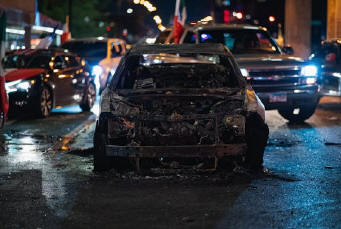 (10/16) Car accidents are indeed unfortunate, yet they are a common occurrence. When involved in an accident, the consequences can stretch on for months, which can be draining. Whether you are the guilty party or the victim, understanding what the law says about compensation can help make the whole ordeal less overwhelming. So, in this article, we will be discussing some key aspects of the Reno car accident compensation laws, including the limits on damages and statute of limitations.
(10/16) Car accidents are indeed unfortunate, yet they are a common occurrence. When involved in an accident, the consequences can stretch on for months, which can be draining. Whether you are the guilty party or the victim, understanding what the law says about compensation can help make the whole ordeal less overwhelming. So, in this article, we will be discussing some key aspects of the Reno car accident compensation laws, including the limits on damages and statute of limitations.
Statute of Limitations
The statute of limitations is one of the first things a car crash lawyer in Reno considers before filing for compensation. Essentially, it refers to the maximum amount of time in which parties in the crash can file for legal proceedings. The statute of limitation applies to both criminal and civil cases. However, more severe cases, such as murder, often have no statute of limitations.
Generally, the time allowed under a statute of limitation varies, depending on the nature of the offense. Take a car accident in Reno leading to personal injury, for example, parties involved in the accident have a maximum of two years to file a claim for damages incurred. After two years, if no legal actions were taken, then the victim can no longer sue to collect compensation.
Additionally, there is a statute of limitations when there's an accident that leads to personal property damage. Property damage can be anything from your house or land to personal items like phones, jewelry, even the vehicle, and so on. In a case where the at-fault party is the state, victims have a two-year deadline to file for compensation. Remember, the statute of limitation only applies to lawsuits filed in court, it does not apply to insurance claims.
Limits on Damages
Aside from the limitations in the timeframe victims are allowed to file a lawsuit, there's also a limit on the amount of compensation that can be awarded in a car crash case. In some car crash cases, the court may award the victim punitive damage. Typically, punitive damages are limited to three times the amount of compensatory damages if the amount of compensatory damage is $100,000. However, if the amount of compensatory damage awarded to the victim is less than $100,000 then the punitive damage is fixed at $300,000.
For cases where a vulnerable or older person suffers injury or loss after an accident, the court will rule the at-fault driver pays two times the actual damages incurred. If the accident caused injuries to pets, the at-fault driver is liable to pay compensation of up to $5000. When the state or someone in a prominent position in the state is the defendant in an accident case, compensation may be up to $150,000 with no punitive or exemplary damages. And for injuries stemming from willful misconduct of a minor, compensation can be up to $10,000.
Other Limits
Aside from the limitations mentioned above, there are other limits to take note of such as comparative negligence. Essentially, it dictates how the responsibility of an accident case is shared between the parties directly involved. Comparative negligence is also known as shared fault or comparative fault. If found to be responsible for the crash by a certain percentage, your compensation will be reduced by that percentage.